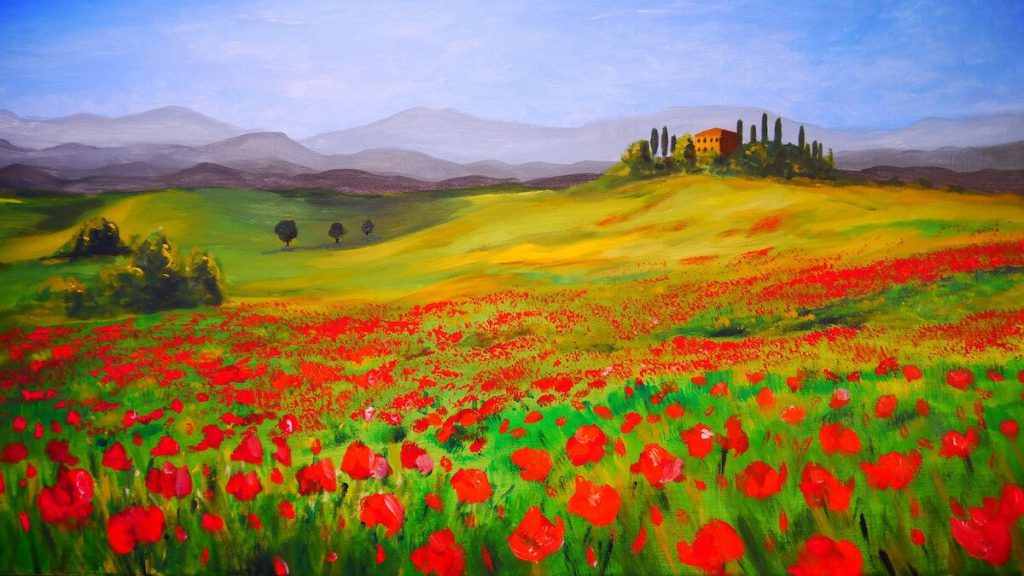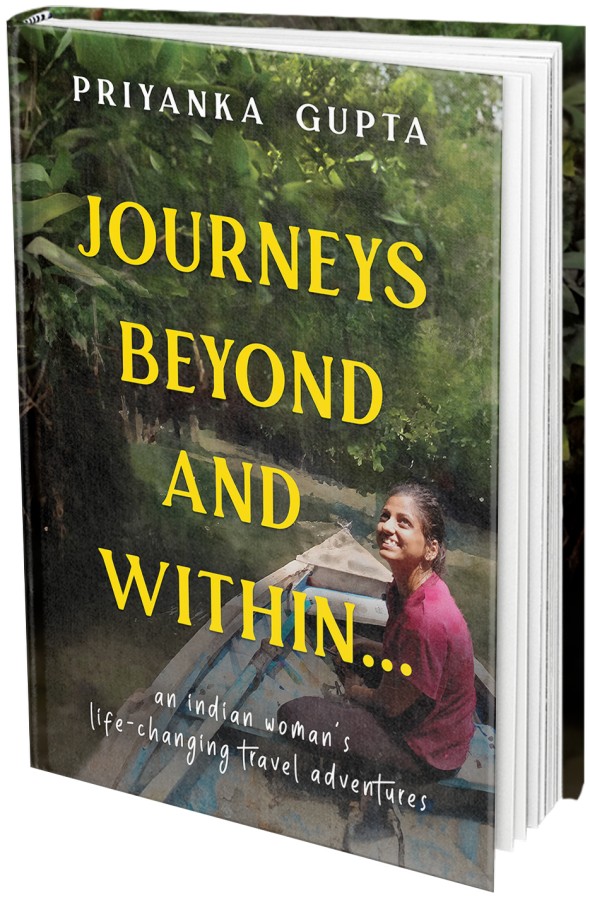
crumb trails
on the road again, break the routine, travel resources, sacred place and years of hard work, travel books, and recent adventures
Dear Reader,
Thank you for joining me. I hope the weeks have been good to you.
Apologies for being away again! But that giant project is off my hands, for now, and so, here I am.
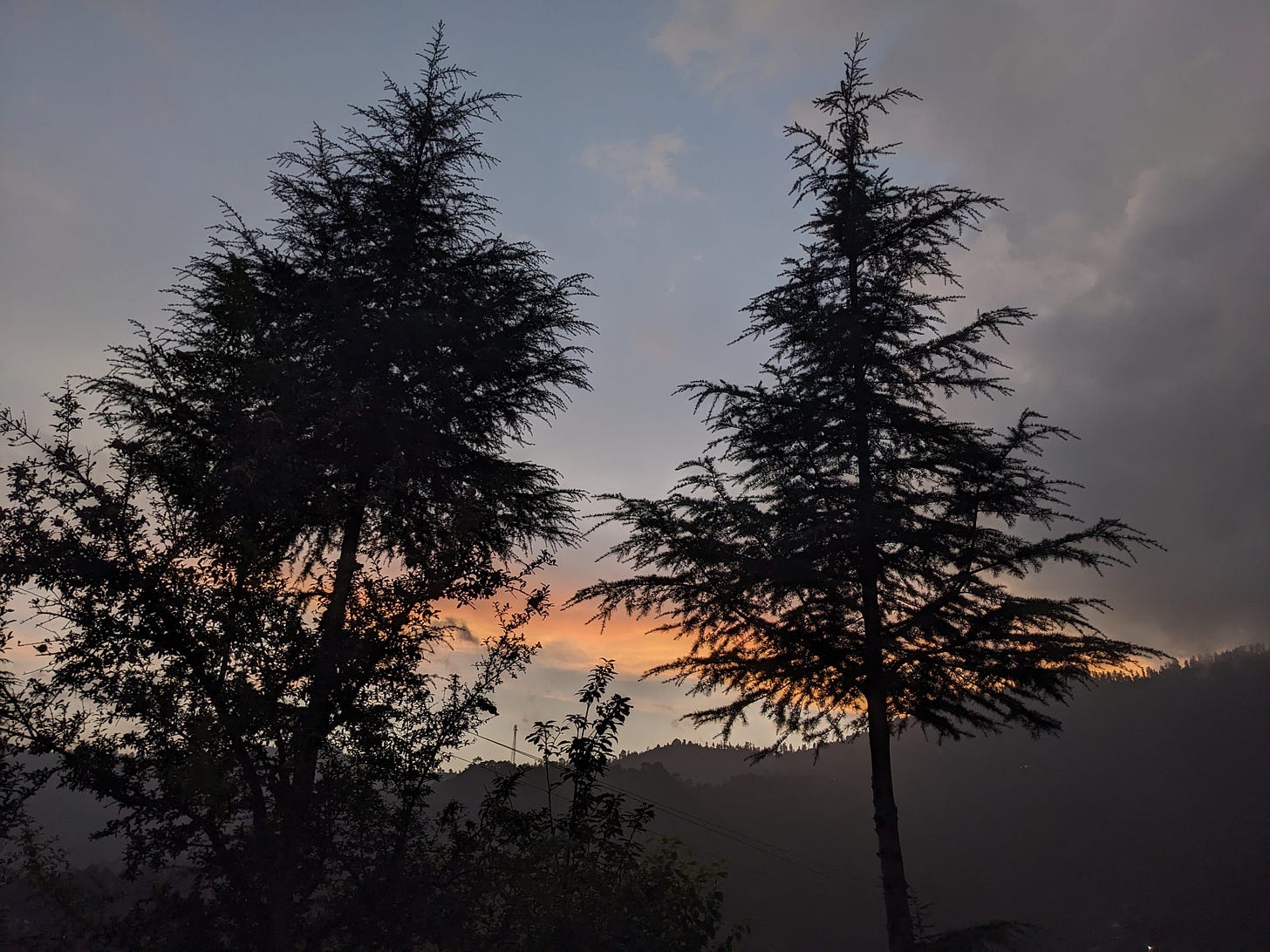
a sunset from the Himalayas
From Himachal Pradesh, the glorious mountains where I was for the last four months, my journey to the South of India has begun.
I visited my parents’ home in North India after two years, so occupied did that non-fiction writing project kept me. I sent the work two weeks ago, and time is already flying by. At my parents’, my schedule was more around them, and it is only now that I finally feel I have got control of my days. Currently on the road, attending friends’ weddings, spotting nilgai in city forests, sitting at cafes, writing in bed, dozing off on rooftops under the full moon are things that are filling up my itinerary.
I have been enjoying talking to friends, being on the go, doing simple everyday things that I haven’t had the time to do in the past year. Like sitting with a cup of tea in the morning without thinking about what is to be done. Watching a movie. Doing 60 to 90 minute yoga sessions. Being with my partner. Reading a book the whole day. Driving around. Waking up without an alarm. Hanging out at a cafe until I can’t drink anymore coffee. Hiking in the hills all afternoon. Speaking to my mother during week days. Perhaps I will get a massage or two, too.
So much we take for granted makes up our days. But when we can’t do any of it, or most of it, we realise how rich usually our daily is.
For now I’m happy about what is done and what is coming my way. I am living all of it.
And amidst all this change, movement, re-picking the work that had paused, reconnecting, listening to my own heartbeat, slowly wrapping up this year, this poem on Hope by Rosemerry Wahtola Trommer echoes my mind.
Hope has holes
in its pockets.
It leaves little
crumb trails
so that we,
when anxious,
can follow it.
Hope’s secret:
it doesn’t know
the destination —
it knows only
that all roads
begin with one
foot in front
of the other.
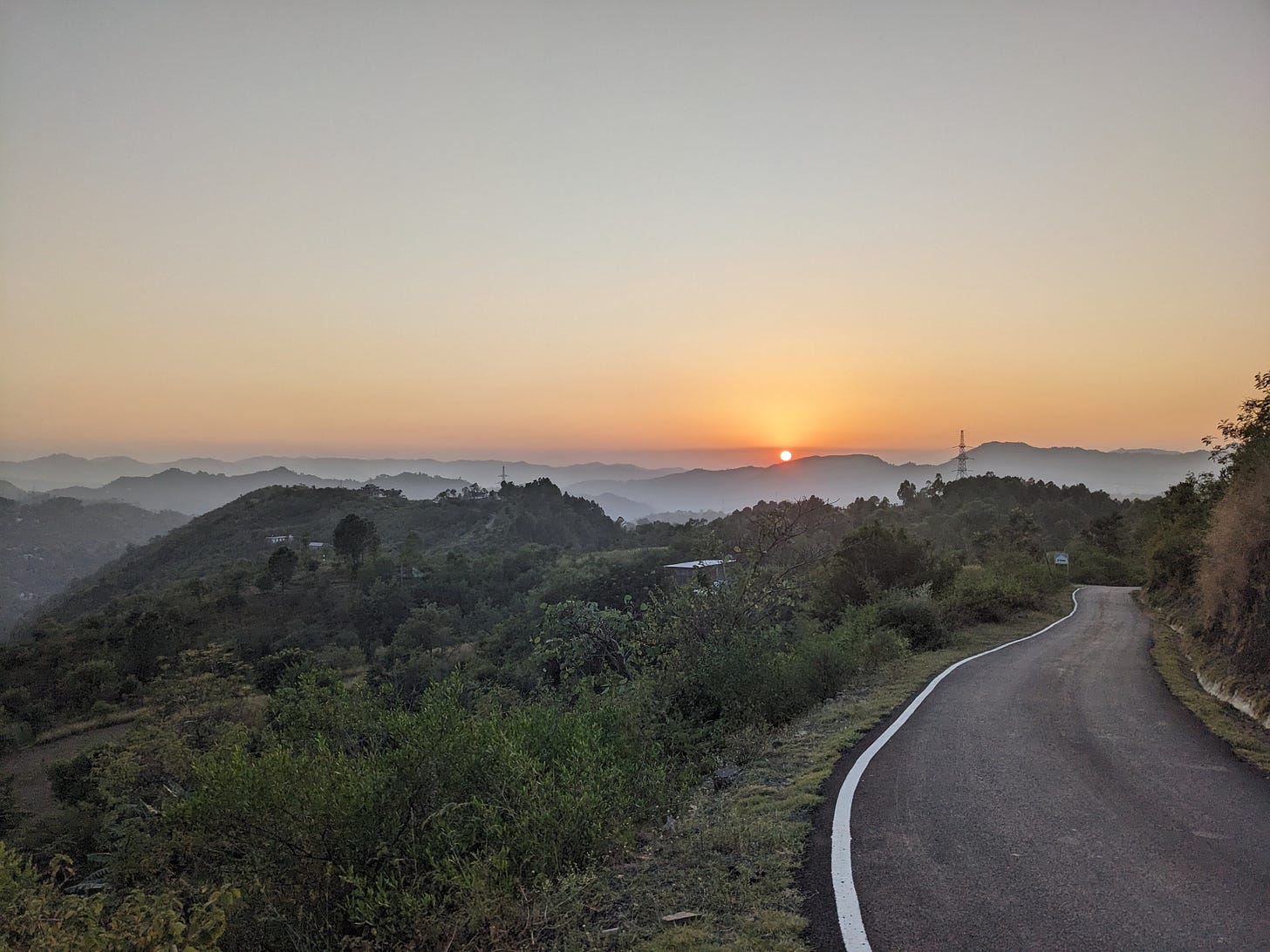
The road goes on, we keep going too.
Do you, sometimes, feel that time just flew by?
For this week’s letter,
Some of my past writing,
quotes I love,
things to read,
things to watch,
and
travel tips.
These Two Past Articles make the most sense at the moment,
Why You Should Break The Routine, Sometimes
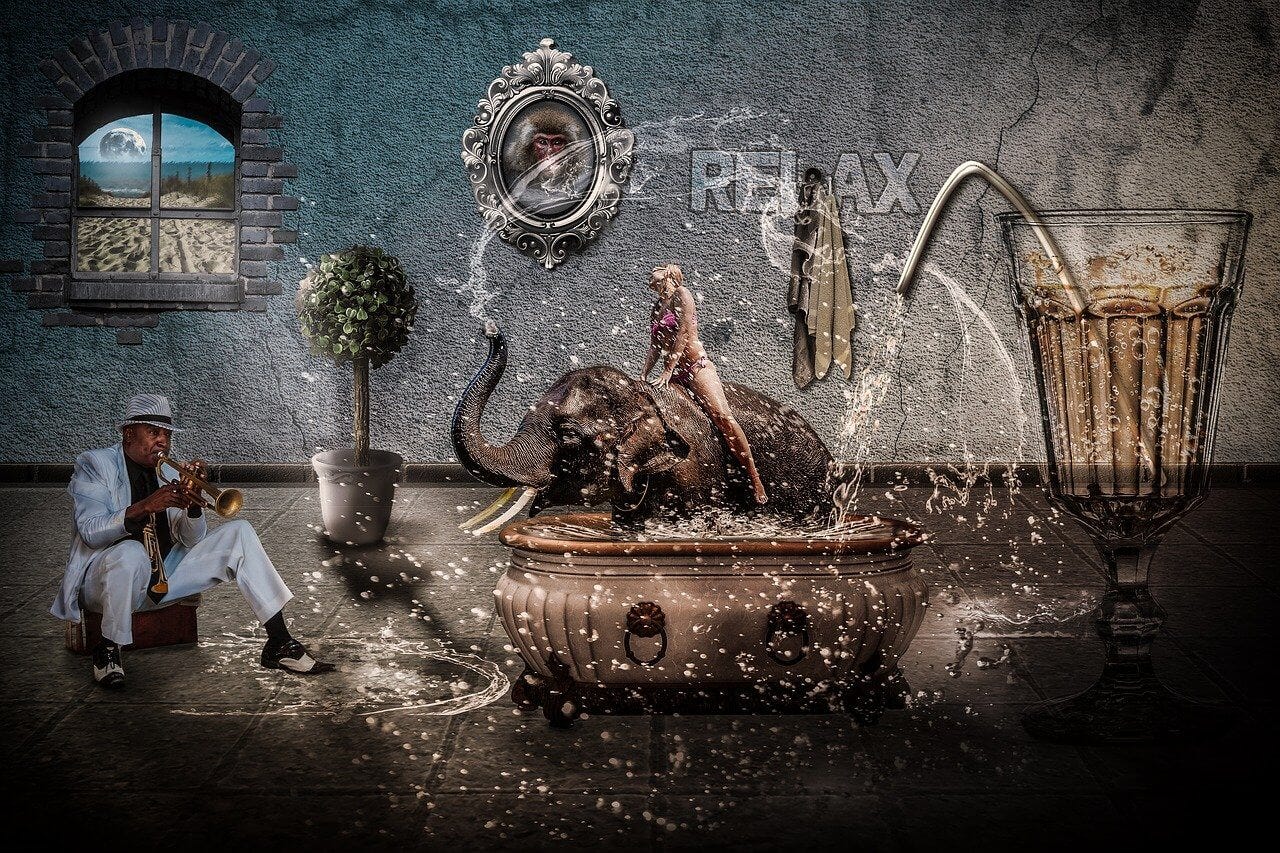
From someone who doesn’t like to break it.
Read the reasons now. Or Pocket them for later.
Travel Resources I Use and Recommend – For those who are planning their year-end vacations and new year travels
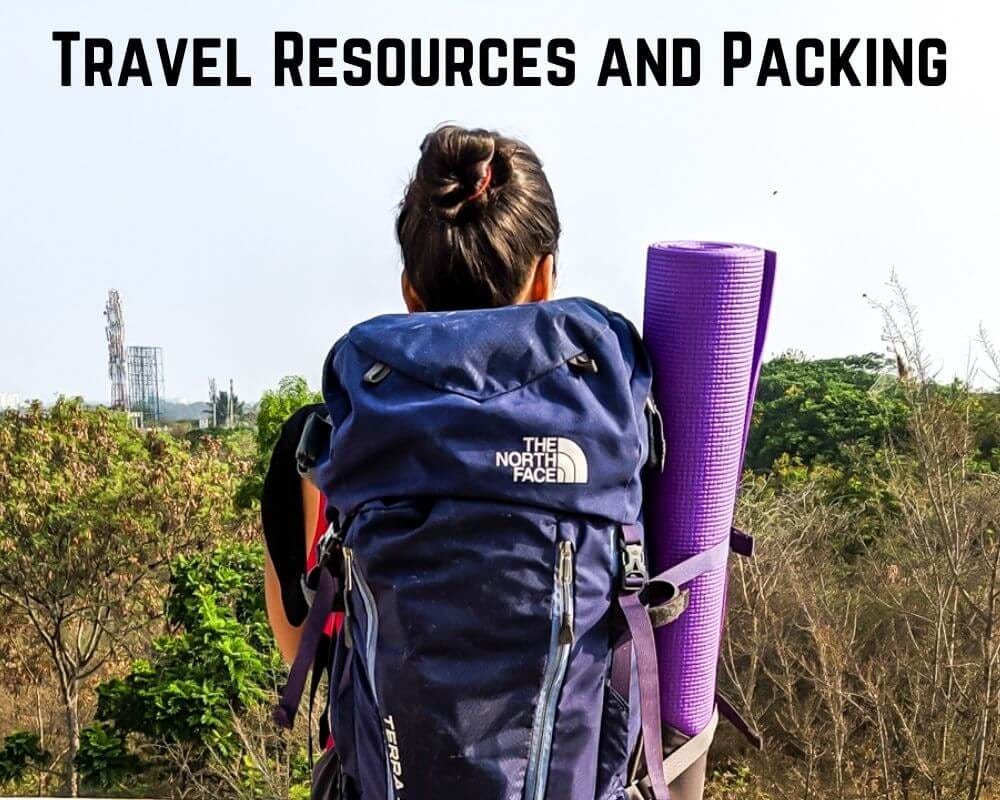
Methods, websites, gadgets, and other little ideas that have helped me be on the road for so many years.
Look at the resources now. Or Pocket the guide for later.
Quotes I Love
“To bear trials with a calm mind robs misfortune of its strength and burden.”
Seneca
“Water is H2O, hydrogen two parts, oxygen one,
But there is also a third thing, that makes it water
And nobody knows what that is.”
D. H. Lawrence
“The sun was up when I awakened and the world was remade and shining. There are as many worlds as there are kinds of days, and as an opal changes its colors and its fire to match the nature of a day, so do I. The night fears and loneliness were so far gone that I could hardly remember them.”
John Steinbeck
“You must have a room, or a certain hour or so a day, a place where you can simply experience & bring forth what you are and what you might be. This is the place of creative incubation. if you have a sacred place and use it, something eventually will happen.”
Joseph Campbell
“Well, I’m 34 now. If I don’t make it by the time I’m 60, I’m just going to give myself 10 more years.”
Charles Bukowski, as he wrote in his book “On Writing”
I’m no stranger to the overflowing baskets of fruits harvested from several years of long, hard days.
I wouldn’t exchange those years for anything. Not even for everything.
Yours Truly
What I’ve Been Reading
I’ve been reading short stories, books, articles, and so much more. I can’t possibly list all what I have read in the past week so I’m putting down the things I found most relevant and worthwhile.
As promised, sharing the books I have been reading,
- Full Tilt_ Ireland to India with a Bicycle by Dervla Murphy — It’s a great book for those who love to see the usual from new eyes, want to read about the many facets of traveling, and those who have an itch for the unknown. That the account is of a solo woman traveler makes the narrative even more intriguing.
- Down and Out in Paris and London by George Orwell — Down and Out is a great text by George Orwell on the desperations of hunger. The author roams around the streets of Paris and London — completely broke — and lives on the system, trying to make ends meet with friends’ help and in the company of others like him whom he runs into on the road. I loved the book for shredding down our life to the threads of survival and for showing me what really matters.
- The Velveteen Rabbit by Margery Williams — This is a cute little story that shows us how to value and love things that have been with us.
- An Innocent Abroad: Life-Changing Trips from 35 Great Writers — In the stories of this anthology, everything that can go wrong on a trip goes wrong, and then some more. Read the collection for adventure, thrill, entertainment, the unknown, to know that nothing is in our control, and also to understand that we can take the seemingly un-cool way at times.
- Better than Fiction: True Travel Tales from Great Fiction Writers — Another great collection of travel stories that demonstrates how much a journey can change us.
What I’ve Been Watching/Listening
that’s worth mentioning
I haven’t seen anything for a while. Writing and reading takes up all my time.
And for all adventure lovers!
Sharing some of the latest pictures from the travels.
The pending ones from Himachal first.
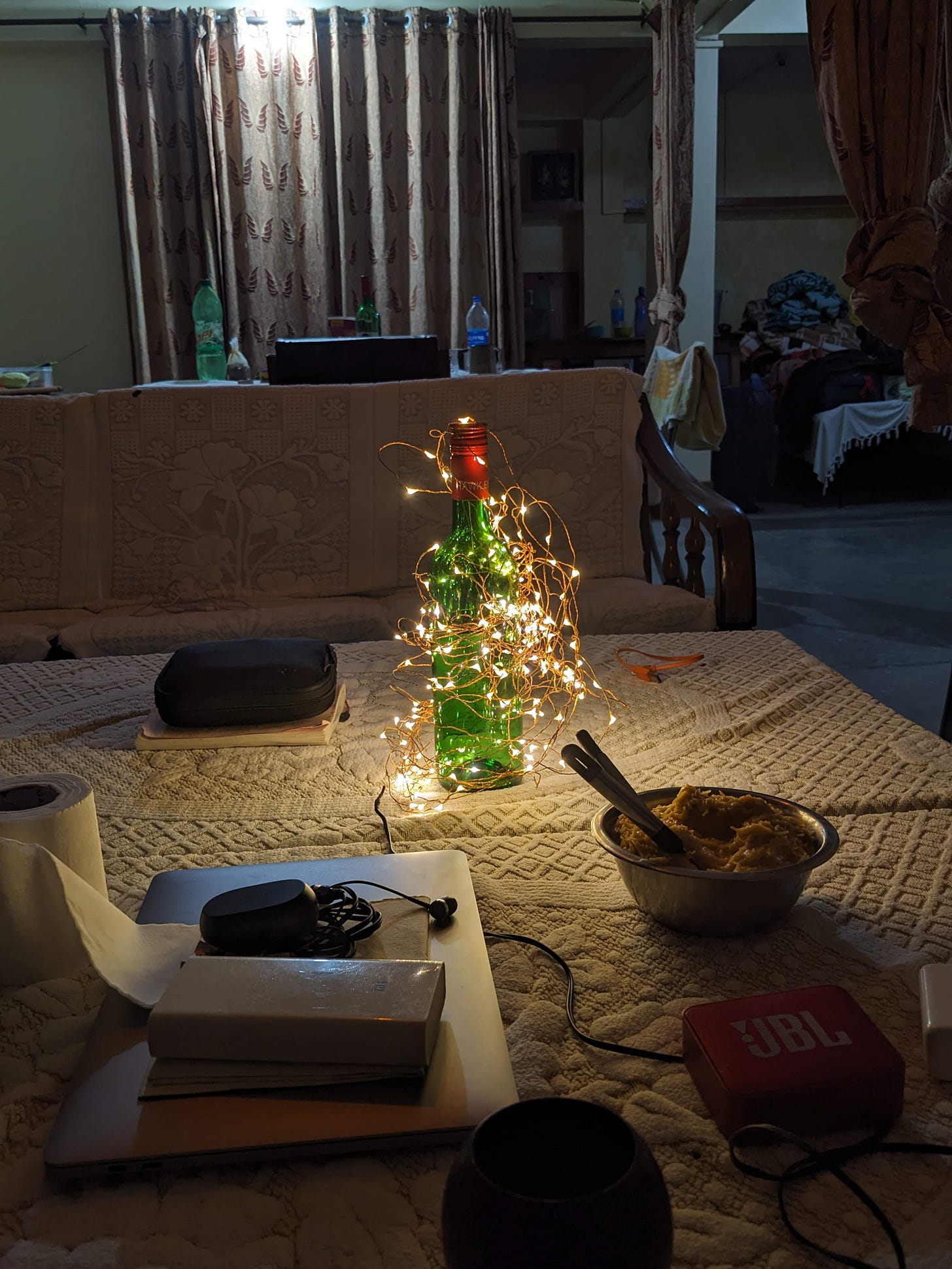
Simple home birthday celebrations in September, at the village homestay
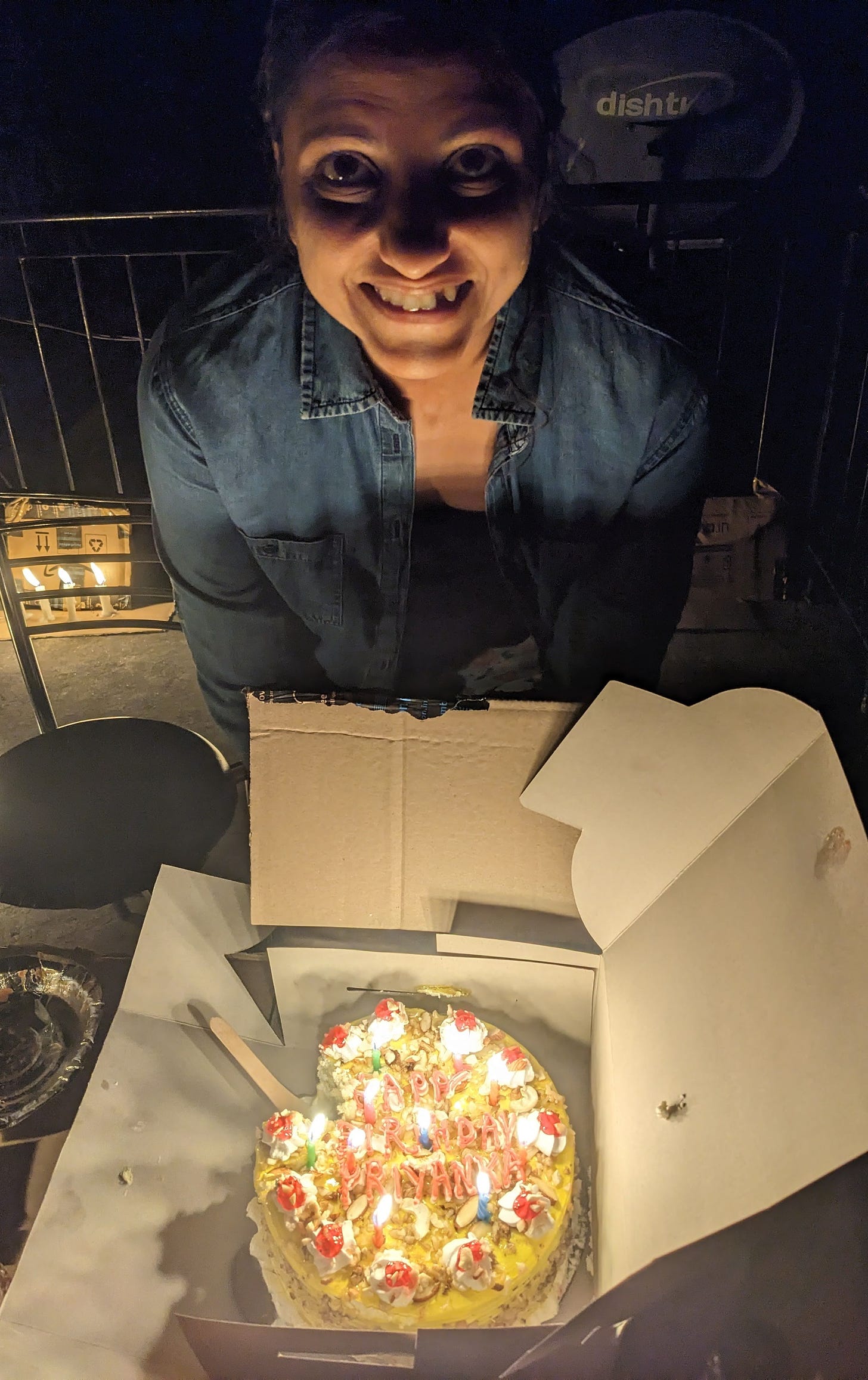
Celebrating my 36th birthday under the stars
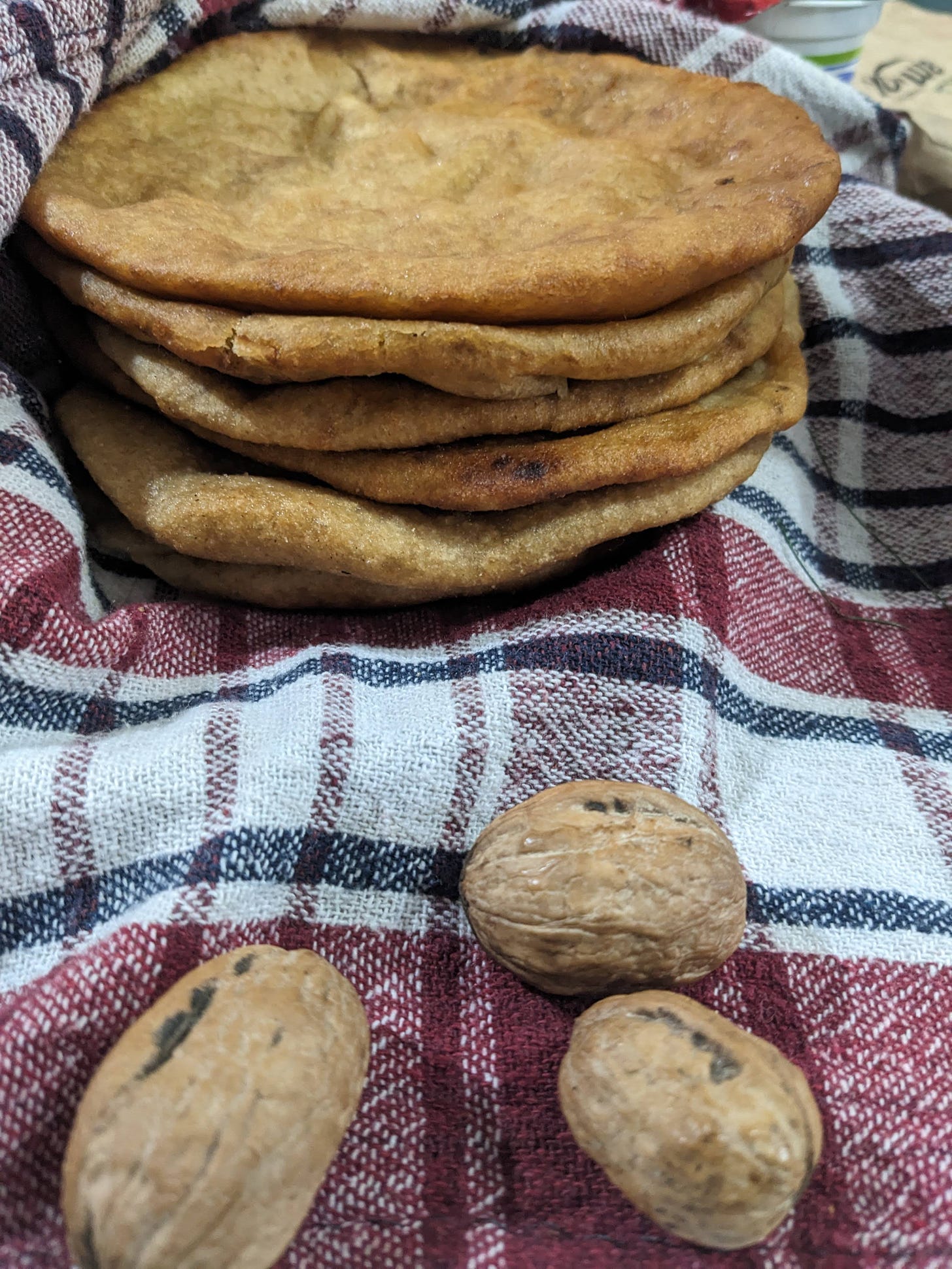
goodies on a local festival
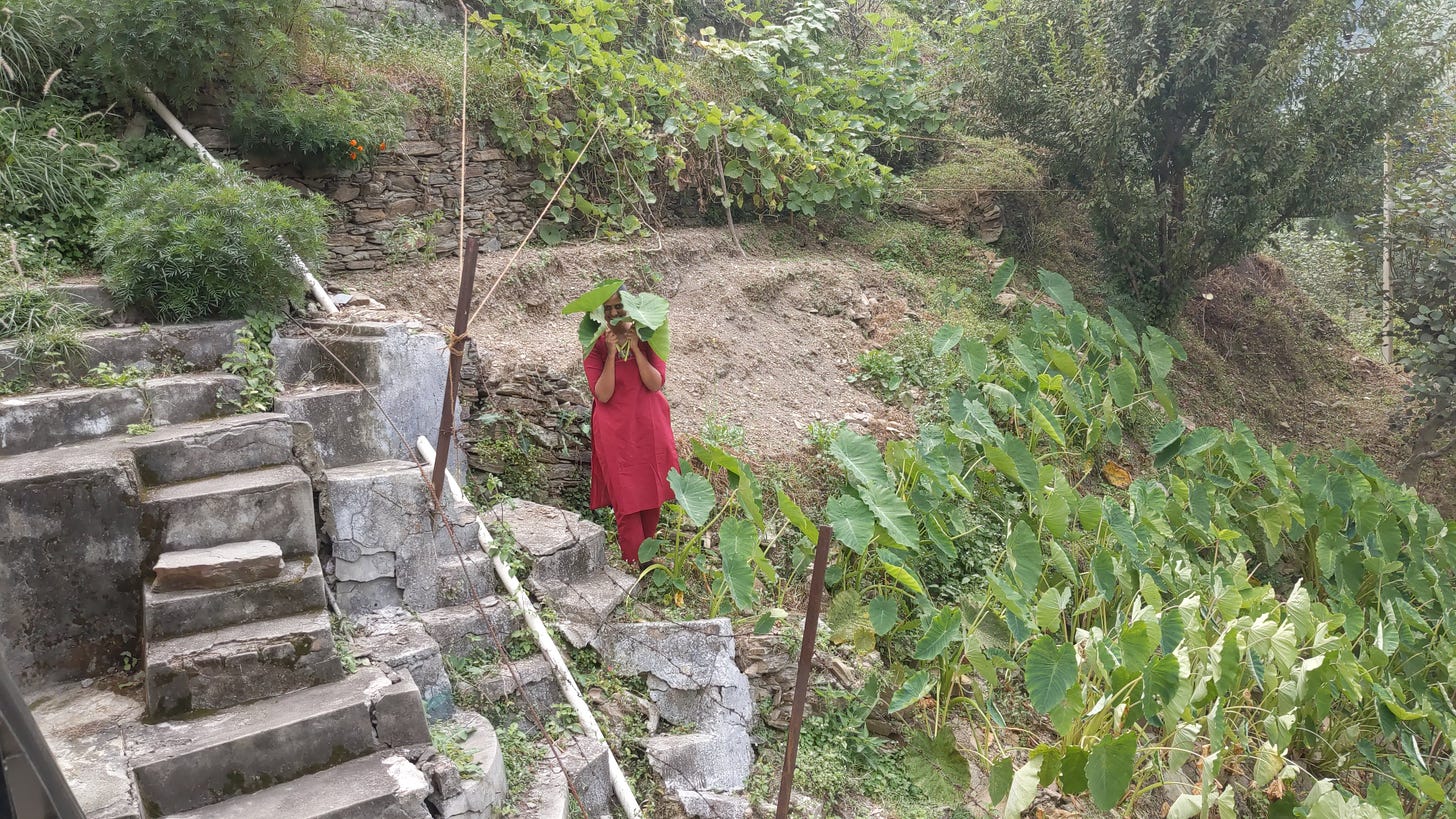
this is me trying to get some colacasia leaves from our 4-month mountain home
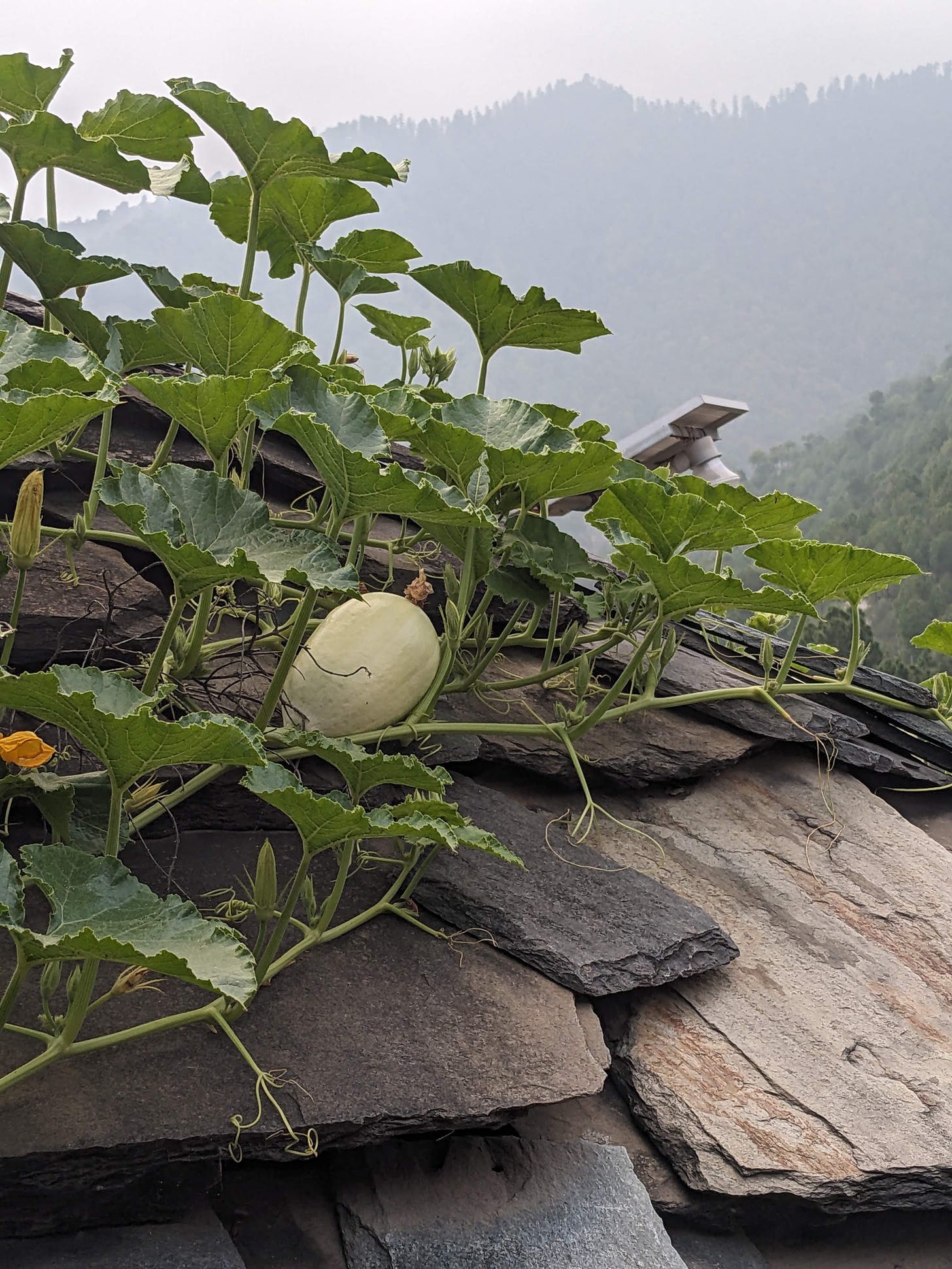
mountain gourds
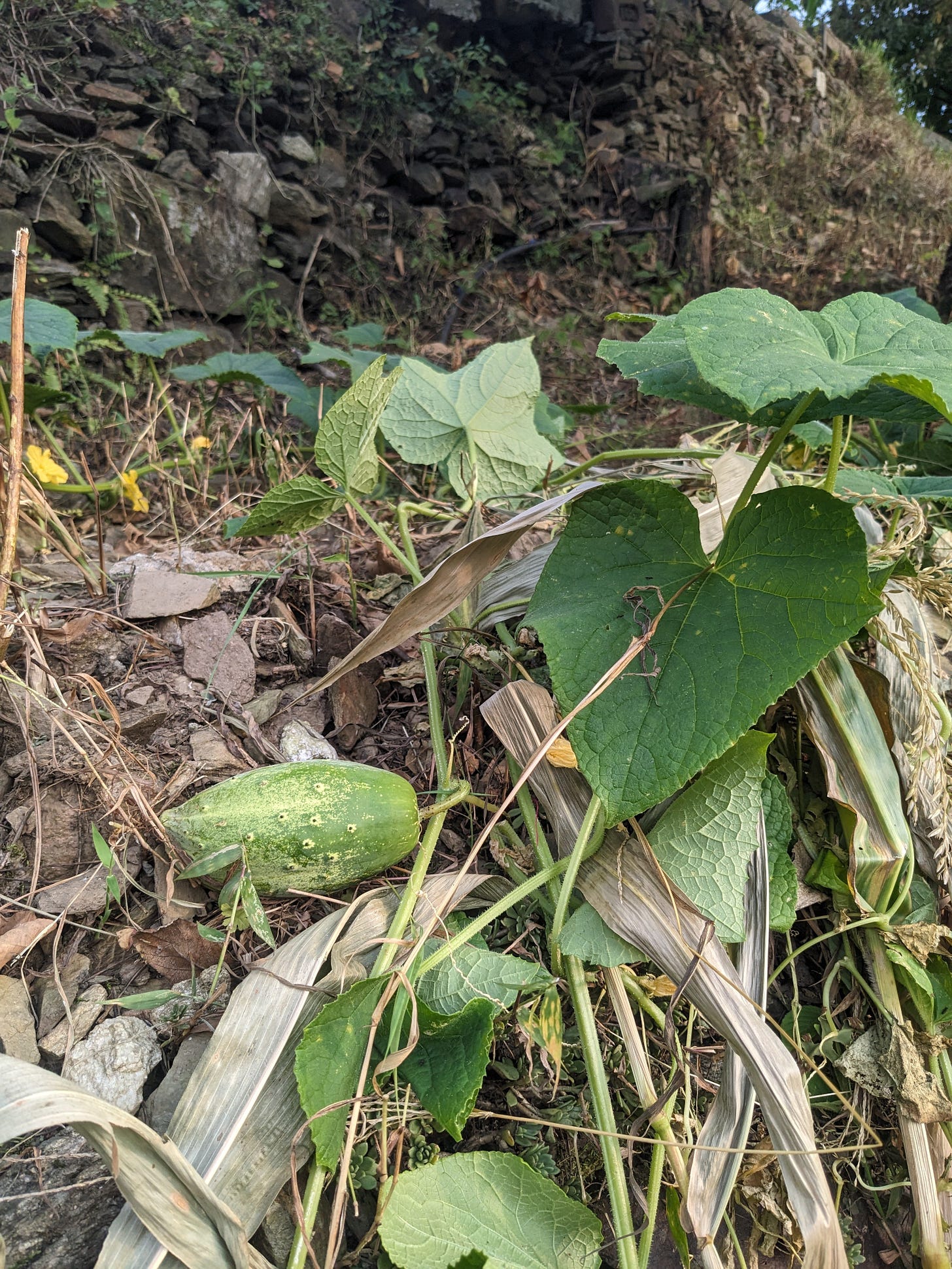
The local cucumber
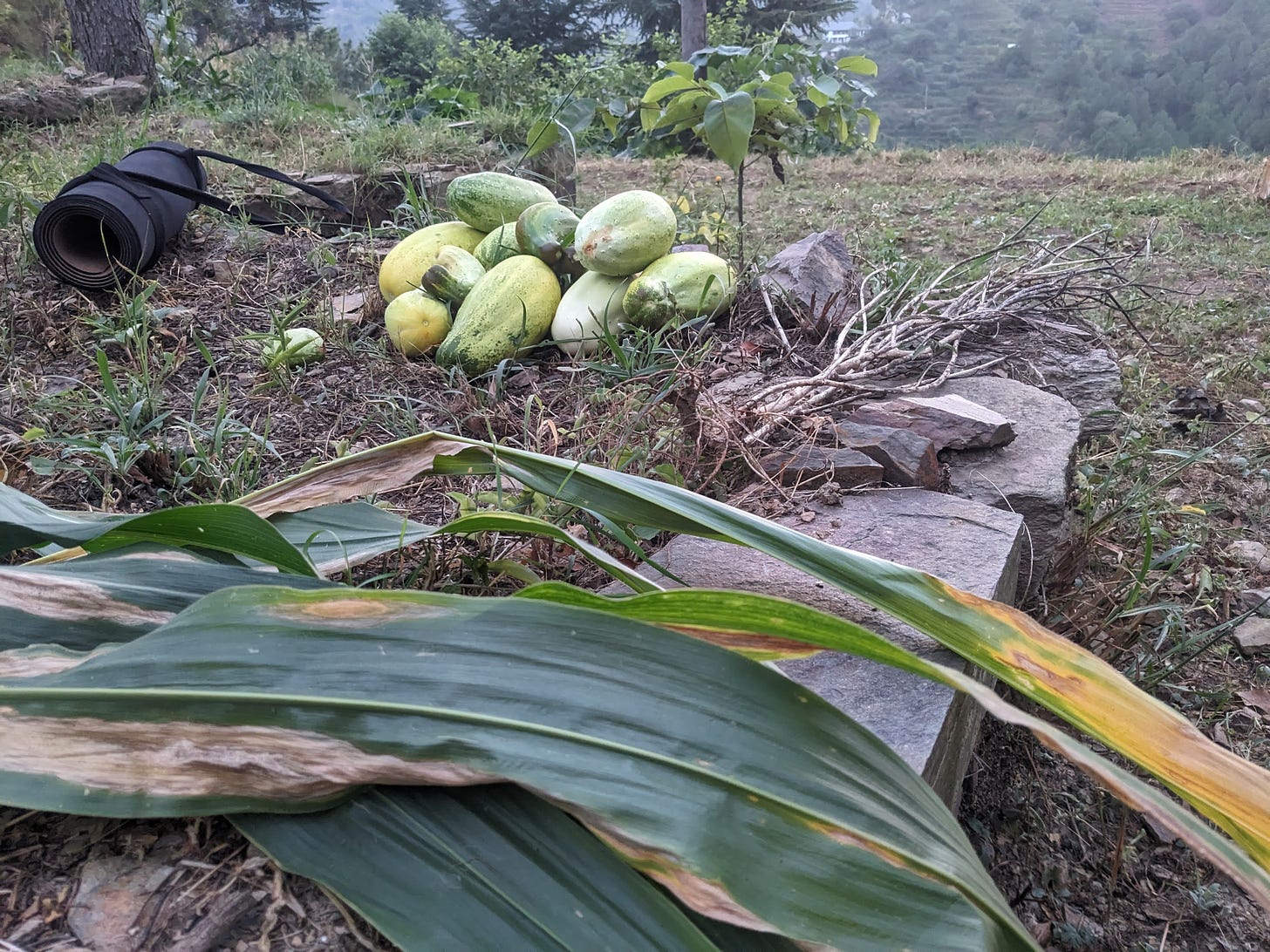
my gourd harvest which i gave to the host, all intact. I was becoming their official plucker.
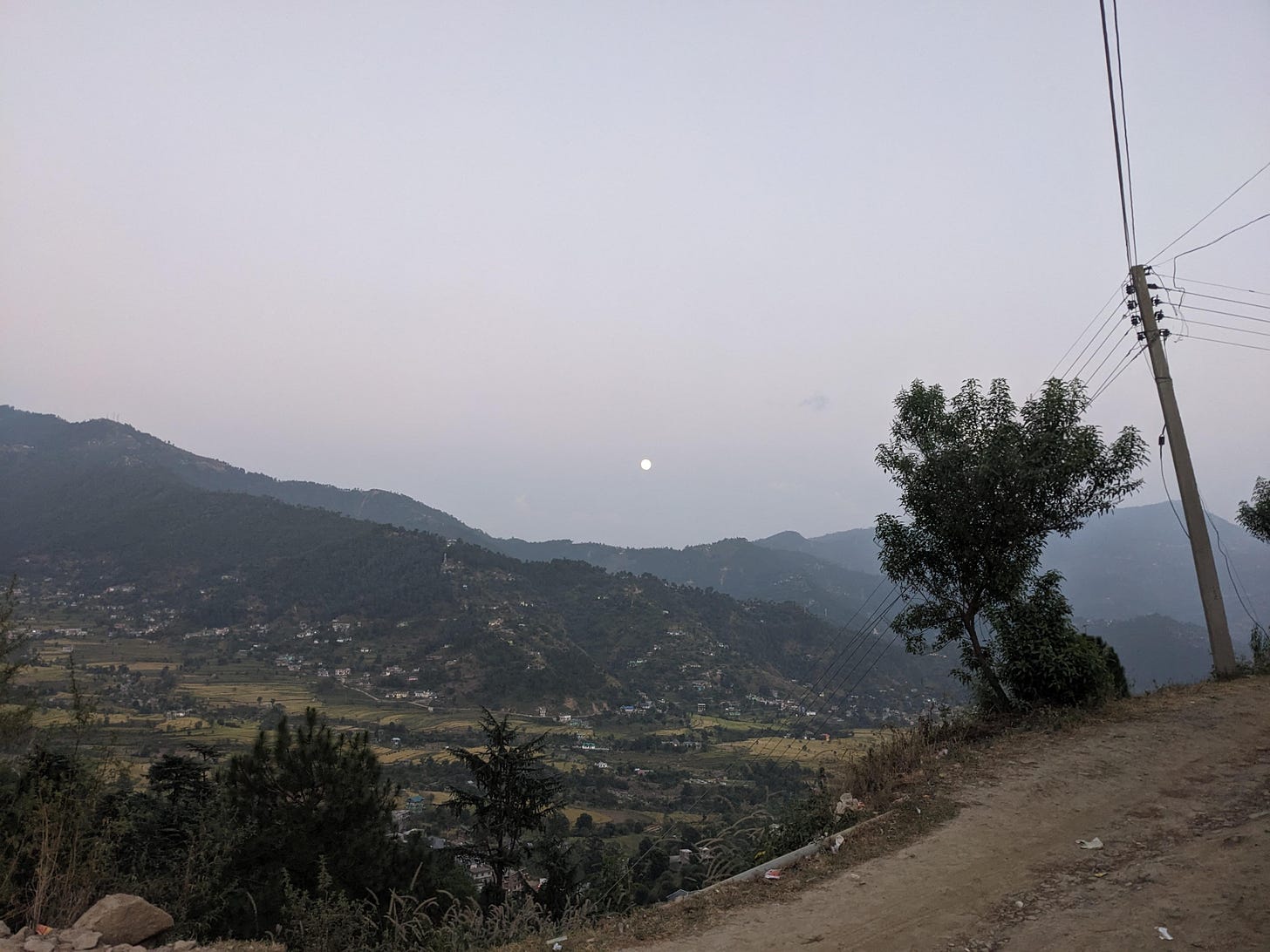
full moon right before we were leaving
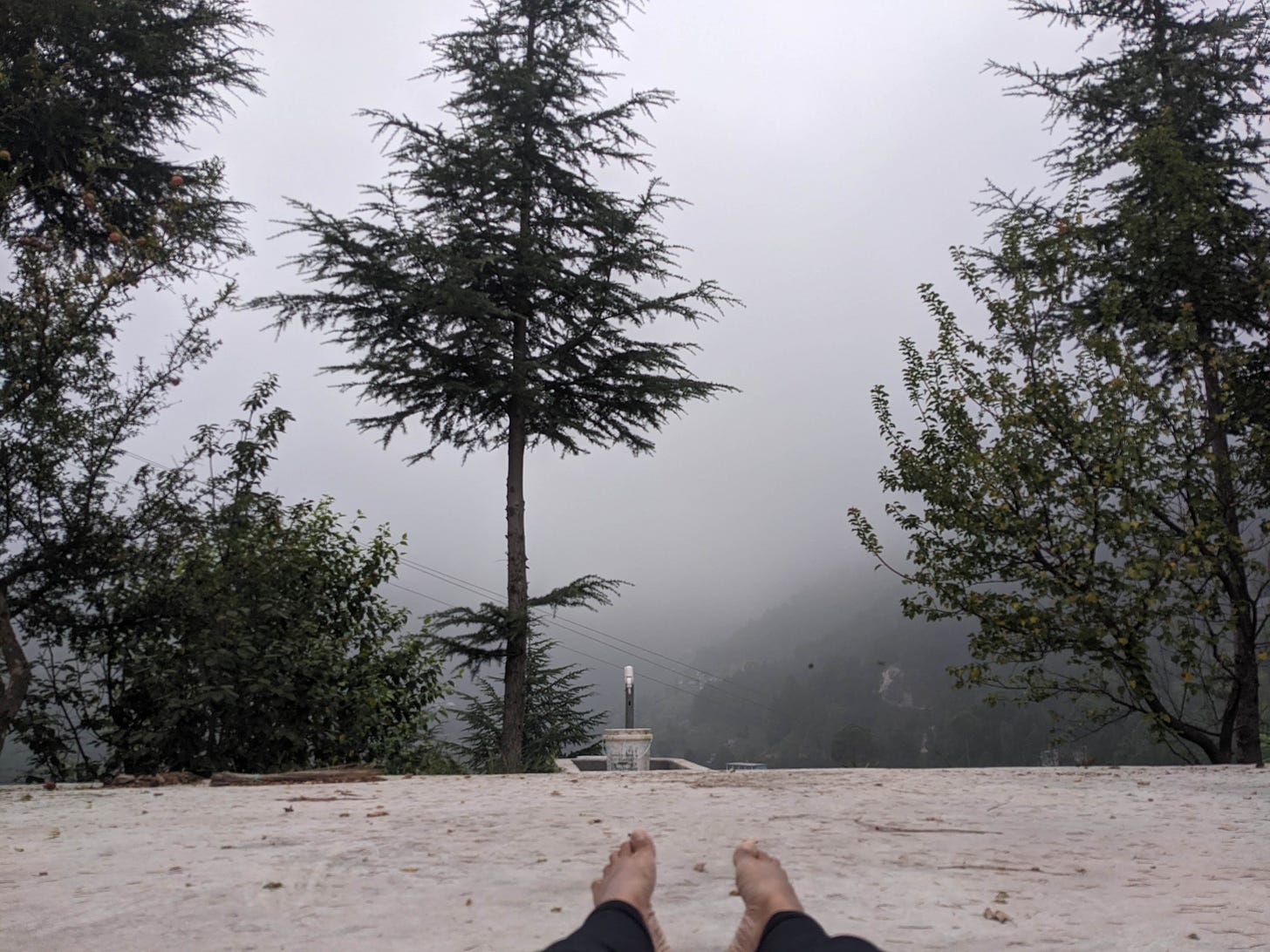
into the world
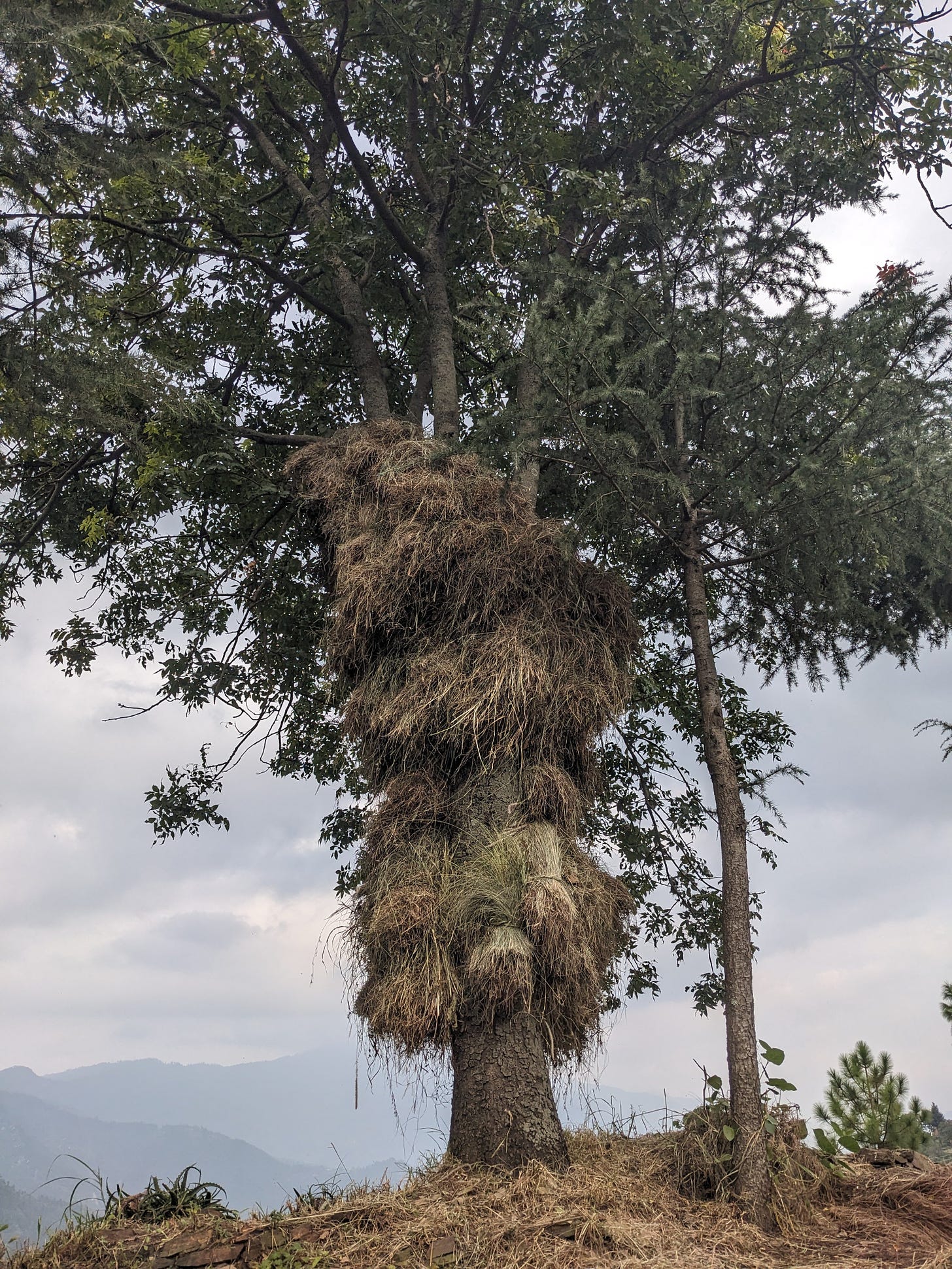
preparing for the winter, all the grass that was on the ground is now on the trees
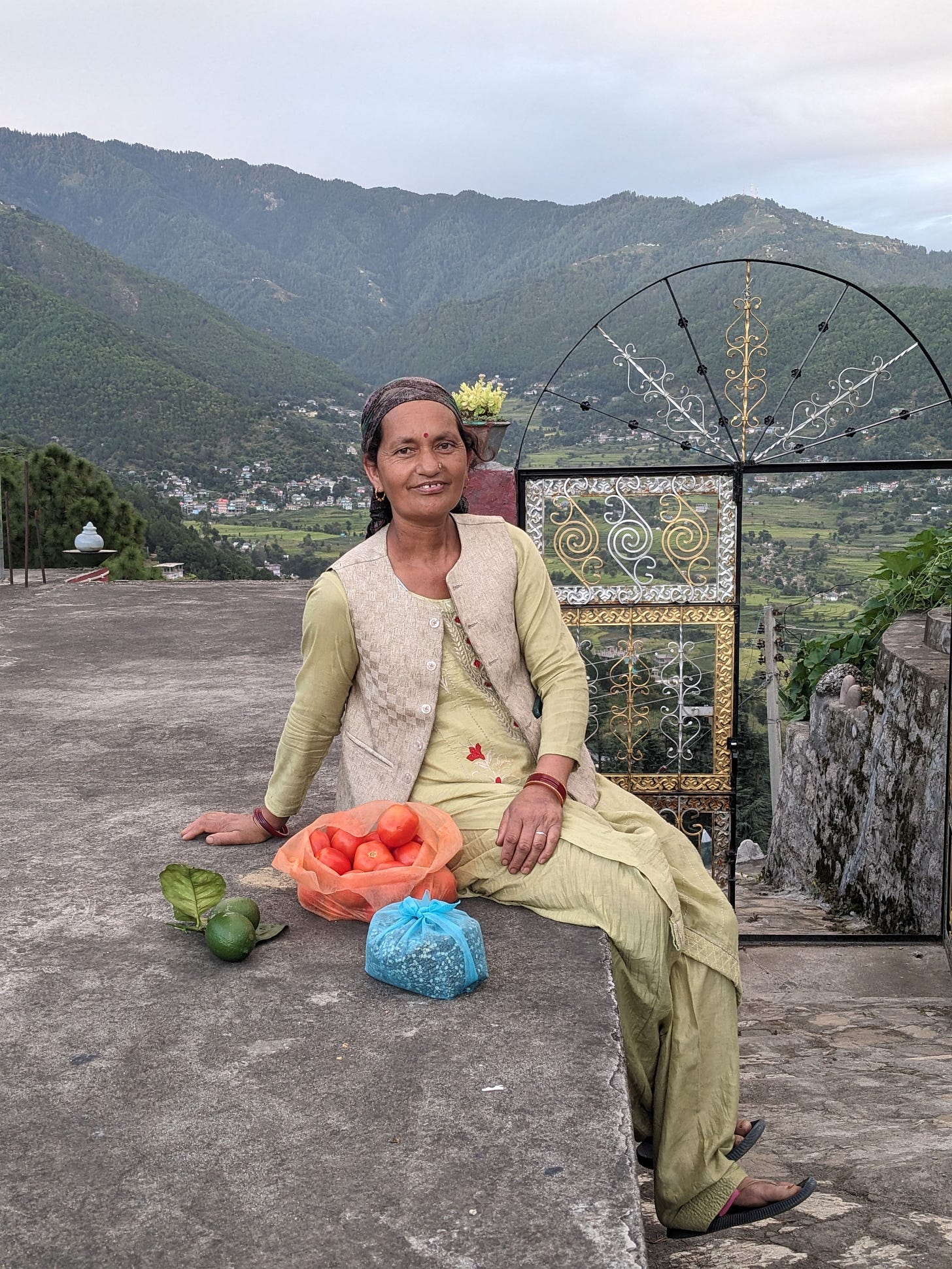
my Himachal village host after a long day of hard work
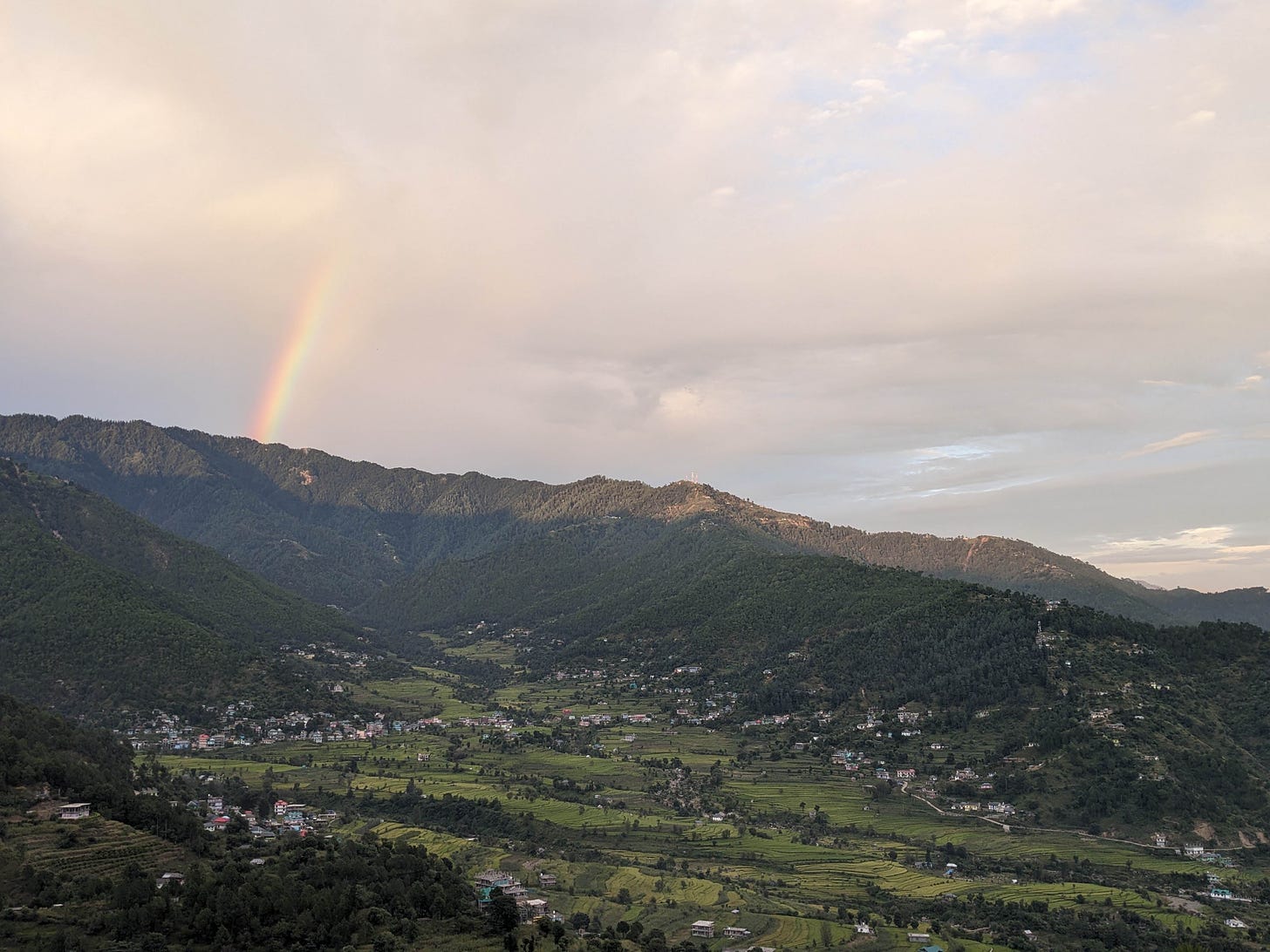
the world as we see it
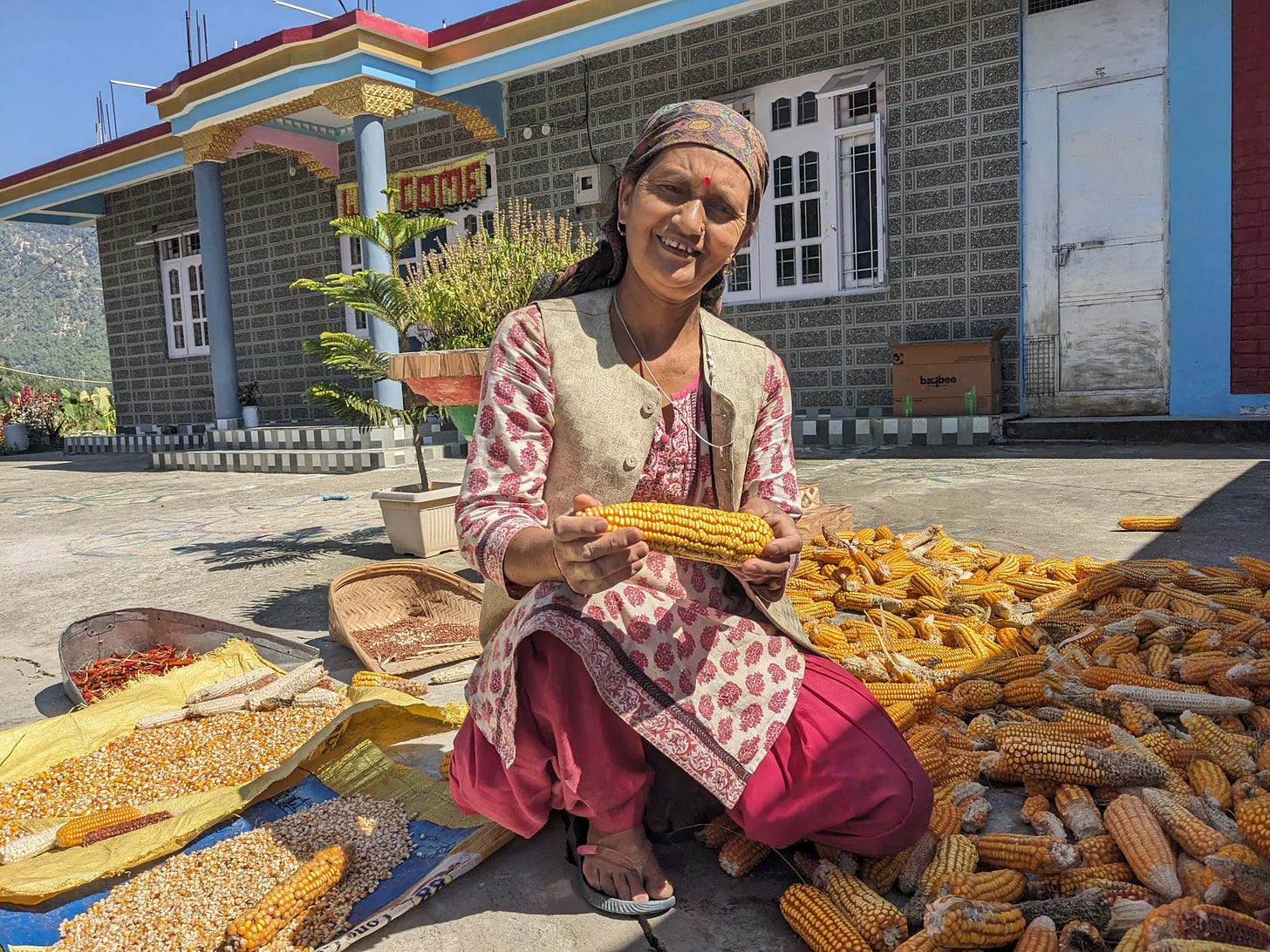
the host poses with her corn harvest as we say our goodbyes
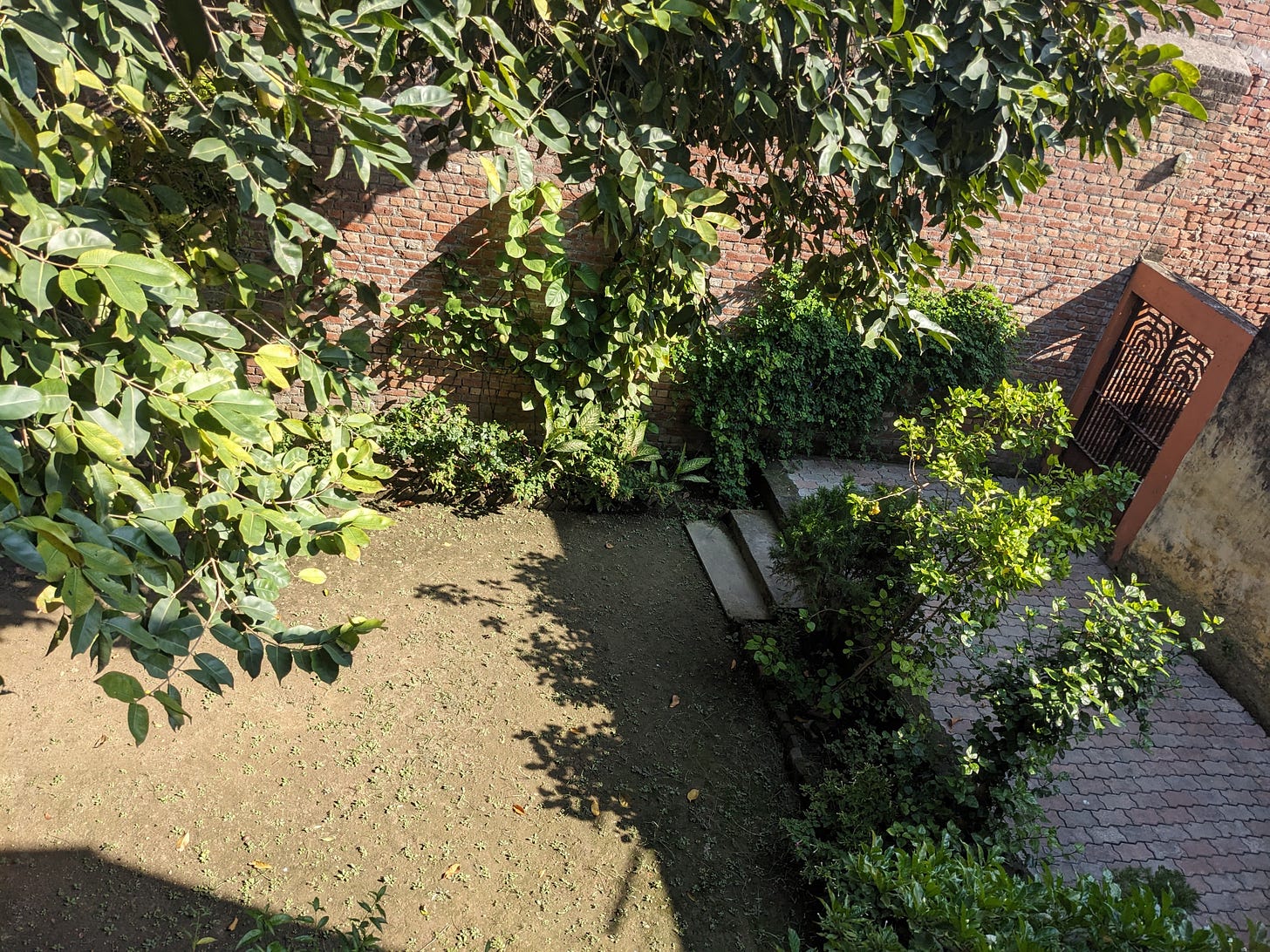
my parent’s home
Thank you for reading.
I hope you have a fun week ahead, and I am glad to be sending my newsletters again 🙂
Let me know what you think about this letter. Press reply.
Yours,
Priyanka
Some housekeeping… This email may end up up in the Promotions tab of your inbox. If you don’t find the newsletter during the week, go to your Promotion tab and move this email to your Primary inbox. Looking Inwards letter will be in your inbox every week from then on.
*****
My much-awaited travel memoir
Journeys Beyond and Within…
is here!
In my usual self-deprecating, vivid narrative style (that you love so much, ahem), I have put out my most unusual and challenging adventures. Embarrassingly honest, witty, and introspective, the book will entertain you if not also inspire you to travel, rediscover home, and leap over the boundaries.
Grab your copy now!
Ebook, paperback, and hardcase available on Amazon worldwide. Make some ice tea and get reading 🙂
*****
*****
Want similar inspiration and ideas in your inbox? Subscribe to my free weekly newsletter "Looking Inwards"!

